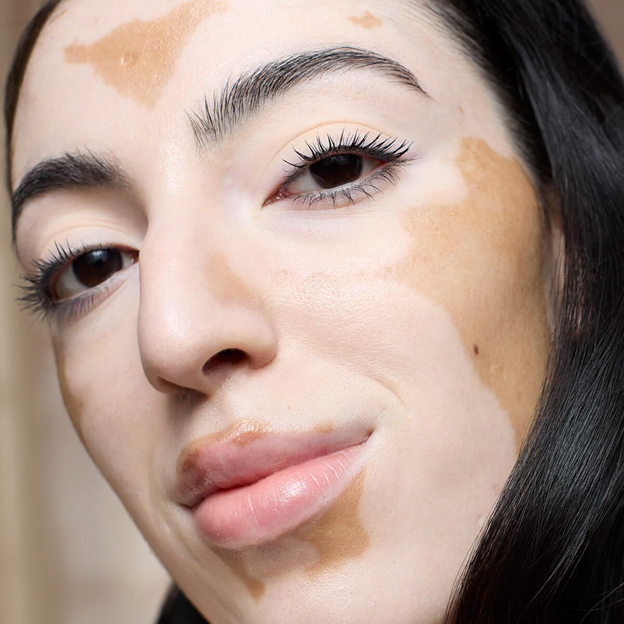Vitiligo is a condition where white patches appear on the skin. These patches occur when the skin loses its pigment. Dealing with vitiligo can be tough emotionally and mentally, as it affects one’s appearance. But managing it well can boost confidence and significantly enhance quality of life. In this blog, we’ll explore how to manage vitiligo effectively. We’ll offer practical tips, discuss various treatment strategies, and provide insight into boosting self-esteem.

Understanding Vitiligo: Grasping the Basics
Vitiligo is an autoimmune condition where the body’s immune system attacks its skin pigment cells, leading to loss of color. It comes in two primary forms: segmental and non-segmental. Segmental usually affects just one side or part of the body, while non-segmental might cause symmetrical patches across the skin.
Early treatment for vitiligo can be beneficial. It’s crucial to consult healthcare professionals early, as they can guide you on possible treatments and the best course of action. Understanding the condition helps in tailoring effective strategies for control. Regular check-ups aid in adjusting treatment plans, improving outcomes, and maintaining skin health.
Tailored Topical Treatments: Creams to Consider
For many, topical creams are a significant part of how to manage vitiligo. Corticosteroids help reduce inflammation and might restore some skin color with consistent use. Another option is calcineurin inhibitors, which might also promote pigmentation without common steroid side effects. Recently, ruxolitinib cream has gained attention for its potential effectiveness in repigmenting skin patches.
When applying these creams, consistency is key. Make sure to follow the healthcare provider’s instructions on how often to apply and how much to use. It’s essential to have realistic expectations. Results can take time, and patience is necessary. However, always monitor for potential side effects, like skin irritation or redness, and inform your doctor of any concerns.
Harnessing Light Therapy for Vitiligo Management
Light therapy, also known as phototherapy, is a popular option to manage vitiligo. It works by using ultraviolet light to stimulate pigment cells. The common types are UVB, PUVA (which combines a drug with UVA light), and the excimer laser, which focuses on small areas. Each has its own protocol, so it’s wise to discuss them with a dermatologist.
During treatment sessions, expect to spend only a few minutes under the light. Results vary from person to person, but some see changes within a few months. Always adhere to safety measures to prevent skin damage. It’s crucial to discuss the frequency and duration with healthcare providers to ensure optimal outcomes.
Surgical Solutions: Addressing Stable Vitiligo
Surgery becomes an option when vitiligo is stable, meaning it hasn’t changed much for a while. Surgical methods like skin grafting and melanocyte transplantation involve moving pigment cells to the affected areas.
Before opting for surgery, certain criteria must be met. One should have stable vitiligo for at least one year. Understanding the procedure and recovery phases is important. It involves several sessions and a careful post-surgery regimen. Ideal candidates are those who have not responded well to other treatments. Setting realistic expectations is key, as complete pigmentation might not be guaranteed.
Innovative Treatment Avenues: Beyond Conventional Therapies
Beyond common treatments, new options are emerging. JAK inhibitors are a new category showing promise. These medications are thought to work by blocking the immune response causing white patches on skin. Another technique, microneedling with growth factors, is being explored. It might help enhance pigmentation by triggering the skin’s natural regeneration process.
Progress in research and clinical trials continues to bring hope. It’s advisable to maintain open discussions with dermatologists about these emerging therapies. Letting your doctor know your openness to try newer treatments can be beneficial.
Embracing Depigmentation: Severe Cases and Considerations
In some severe cases, when other treatments do not provide satisfactory results, depigmentation becomes an option. It involves using agents like monobenzone to lighten the remaining skin so it matches the patches.
It’s crucial to make an informed choice before starting depigmentation because it’s irreversible. Consider possible irreversible outcomes and life-long changes. Seeking support from peers and professionals helps in weighing the decision rationally.
Holistic Approaches: A Comprehensive Outlook
A holistic approach can significantly benefit those looking for white patches on skin home remedies. These include using sunscreen to protect untreated areas and camouflage products to cover noticeable patches.
Feeling down or stressed can worsen white patches on skin, so managing stress is crucial. Consider counseling to connect with supportive networks. Knowing you aren’t alone can improve mental well-being. Complementary practices like yoga or meditation help in stress reduction, promoting overall well-being.
Finally, focusing on regaining confidence and learning to embrace oneself is extremely uplifting. Establishing a daily routine that includes self-care can aid in boosting self-esteem.
Conclusion: Wrapping Up Your Vitiligo Journey
So, there you have it. Different strategies on how to manage vitiligo. From topical treatments to light therapy and surgical options, there’s always hope. Participation in proactive care and consistent adherence to treatment are significant.
Research continues to advance, offering new possibilities. Remember, whether trying conventional or white patches on skin natural treatment, you’re not alone. Stay optimistic and empowered as you navigate your journey to managing vitiligo effectively.

